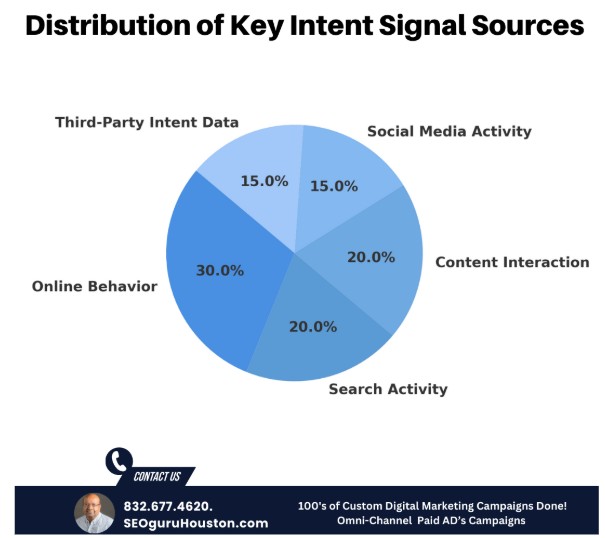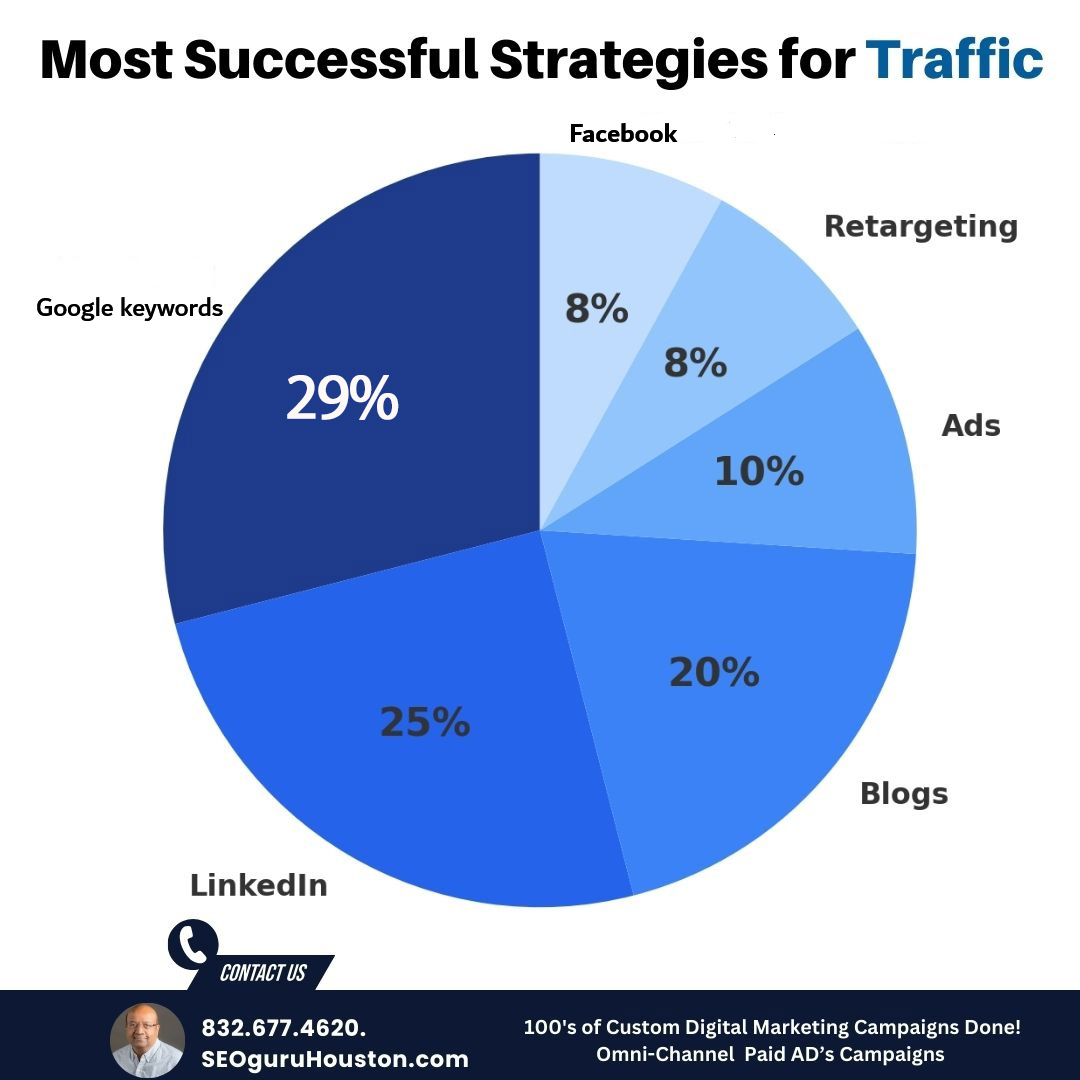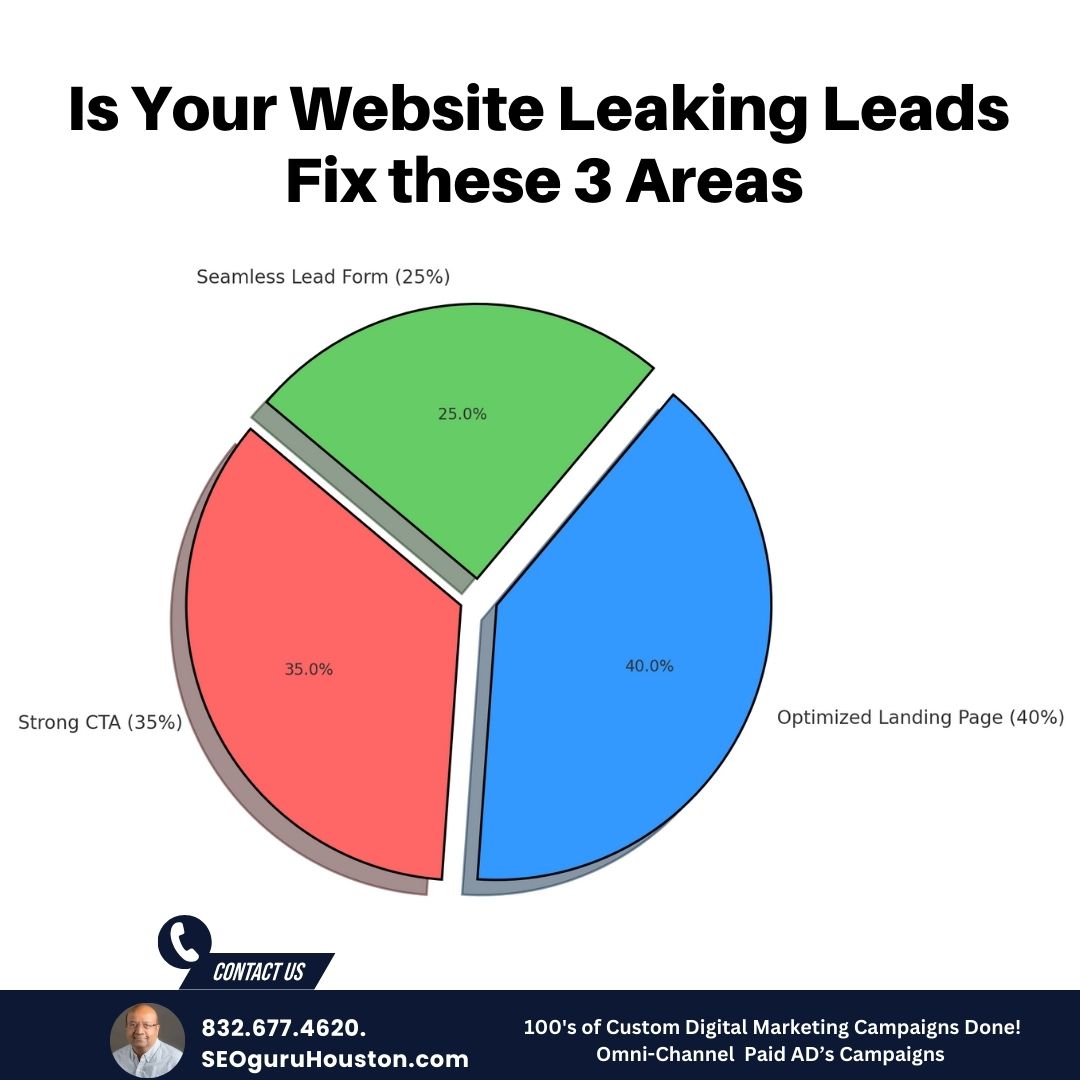In the current digital landscape, the significance of search engine optimization (SEO) for businesses cannot be overstated. A robust SEO strategy is essential for enhancing online visibility, driving traffic generation, and ultimately increasing sales through conversion rate optimization. Many business owners encounter challenges when attempting to manage SEO independently, including time constraints and a lack of expertise. This article examines these obstacles and underscores the advantages of collaborating with a digital marketing agency. It will provide insights into how the appropriate agency can elevate your SEO efforts and facilitate success in an increasingly competitive online market.
The Importance of SEO for Businesses
In the current highly competitive digital landscape, the significance of search engine optimization (SEO) for businesses is paramount. Effective SEO is essential for establishing a robust online presence, driving organic traffic, and enhancing brand visibility.
By implementing SEO best practices, businesses can optimize their websites and ensure that their content effectively reaches the target audience. As consumers increasingly depend on search engines to discover products and services, a comprehensive understanding of SEO becomes a critical component of any digital strategy.
Additionally, utilizing SEO tools can streamline efforts to enhance search ranking, leading to increased customer acquisition, enhanced lead generation, and improved return on investment (ROI).
Understanding the Role of SEO in Digital Marketing
Understanding the role of SEO in digital marketing is essential for businesses aiming to enhance their online presence and engagement. SEO serves as the foundation of digital marketing by ensuring that websites are optimized for search engines, thereby driving organic traffic and increasing brand awareness with strategic digital campaigns.
This process involves a combination of keyword research, content creation, and improvements in user experience, all geared toward addressing search intent and optimizing for mobile-first indexing and enhancing visibility on search engine results pages (SERP). By analyzing performance metrics and user behavior through web analytics, businesses can continuously refine their SEO strategies to maximize effectiveness.
SEO does not function in isolation; it integrates seamlessly with various elements of digital marketing, including content marketing, pay-per-click (PPC) advertising, social media marketing, and influencer marketing. Each of these components can significantly enhance the efficacy of SEO efforts.
For example, high-quality content not only attracts organic visitors but also provides shareable resources for social media platforms. Concurrently, strategic keyword research informs both SEO and PPC strategies, ensuring that businesses can effectively target the appropriate audience.
Ultimately, leveraging these interconnected strategies enables businesses to formulate a comprehensive digital marketing approach that capitalizes on the strengths of each channel, including effective market segmentation.
Challenges of Doing SEO Alone
Many businesses acknowledge the critical importance of search engine optimization (SEO); however, the challenges associated with managing it independently can be quite formidable.
In the absence of adequate time and expertise, organizations frequently encounter difficulties in staying abreast of the latest strategies and updates to search algorithms that are vital for effective SEO.
Time constraints often result in incomplete website audits and inadequate keyword research, which can adversely affect overall website performance and traffic generation.
Furthermore, the rapidly evolving digital landscape presents substantial challenges for businesses attempting to navigate the complexities of SEO on their own.
Time and Resource Constraints
Time and resource constraints represent significant challenges that many businesses face when striving to implement effective SEO strategies. The need to balance daily operations with the demands of SEO can be particularly overwhelming for small enterprises that have limited staff and financial resources.
Consequently, essential tasks such as website optimization and content creation may be neglected, resulting in suboptimal search engine rankings and a decline in organic traffic. This, in turn, adversely affects the overall success of a company’s digital marketing efforts and its competitive position in the market.
In the absence of proper attention to ongoing analytics, businesses risk overlooking critical insights that could inform future optimization initiatives. For example, a retail website may fail to recognize keyword performance trends, leading to content that becomes outdated and no longer resonates with its target audience.
To address these challenges, companies should prioritize SEO tasks by developing a content calendar and utilizing automation tools to streamline reporting processes. Strategic resource allocation, such as investing in dedicated SEO personnel or outsourcing specific functions, can enable businesses to adopt a sustainable SEO approach that supports their growth while accommodating their limitations.
Lack of Expertise
A lack of expertise in SEO can significantly restrict a business’s capacity to implement effective digital marketing strategies. Without a comprehensive understanding of the technical elements involved, a business may struggle to optimize its reach in an increasingly competitive online environment.
For example, inadequate keyword density may lead to either under-optimization or keyword stuffing, both of which can detrimentally affect search visibility. Furthermore, the absence of a strategic link-building approach can result in a website being isolated, thus depriving it of valuable traffic and the authority derived from quality backlinks.
Moreover, neglecting user experience can result in elevated bounce rates and diminished customer journey engagement, as visitors may find it difficult to navigate a website that is not optimized with SEO principles in mind. Collectively, these factors can significantly impede a business’s overall online presence and its ability to engage effectively with its target audience.
Benefits of Hiring a Digital Marketing Agency
Engaging a digital marketing agency offers numerous advantages that can substantially enhance a business’s SEO initiatives and social proof. These agencies typically employ a team of experts who possess specialized knowledge across various facets of digital marketing, including SEO, content marketing, and social media strategies.
By leveraging their expertise, businesses can effectively perform competitive analyses, identify market trends, and implement cost-effective solutions that drive organic traffic and enhance conversion rates. This collaboration facilitates a more concentrated approach to SEO, allowing businesses to attain superior results without the challenges associated with in-house management.
Digital Marketing ROI Statistics
Digital Marketing ROI Statistics
The Digital Marketing ROI Statistics provide insightful data on the effectiveness of various digital marketing strategies. Understanding these metrics is crucial for businesses aiming to maximize their return on investment in the digital space.
Average ROI in Digital Marketing Channels showcases the significant impact of different strategies:
Influencer Marketing: The 89.0% ROI
Content and Engagement:
The 72.0% improvement in engagement through content marketing highlights how strategic content creation fosters deeper connections with audiences. Quality content not only informs but also entertains, encouraging higher interaction rates.
Video Retargeting: With a 49.0% ROI increase, video retargeting proves effective for re-engaging users who have previously interacted with brand content. This approach personalizes user experience, boosting conversion chances.
Video on Landing Pages: Achieving an 86.0% conversion rate
These statistics emphasize the importance of leveraging diverse digital marketing channels to optimize ROI. Influencer marketing enhances brand trust, while content marketing and video strategies promote engagement and conversion. For businesses, integrating these elements effectively can lead to significant returns, driving growth and success in the competitive digital landscape.
Access to a Team of Experts
Access to a team of experts constitutes one of the primary advantages of engaging a digital marketing agency for SEO services. These agencies employ professionals with specialized skills in areas such as keyword research, content creation, technical SEO, and analytics.
With this diverse skill set, they are equipped to develop tailored strategies aimed at enhancing a business’s online presence and optimizing website performance for improved organic search. Their capability to monitor performance metrics facilitates data-driven marketing decisions that continuously refine SEO efforts and improve overall return on investment (ROI).
The collaborative nature of agency work allows various specialists to contribute unique perspectives, resulting in innovative solutions that an individual in-house staff member may overlook. For instance, while one expert may concentrate on enhancing site speed, another may focus on creating engaging content that resonates with target audiences.
This synergy fosters an environment in which complex challenges are approached from multiple angles, enabling the development of comprehensive strategies that drive increased traffic and conversions.
Ultimately, leveraging a team of experts give the power tos a business to remain agile within the rapidly evolving digital landscape, ensuring that their marketing strategies remain both effective and relevant.
Cost-Effective Solutions for SEO and Local SEO
Engaging a digital marketing agency frequently results in cost-effective solutions for businesses aiming to enhance their SEO strategies. Rather than hiring in-house personnel and incurring additional training expenditures, companies can draw upon the agency’s established expertise and resources.
This streamlined approach not only facilitates effective budget management but also increases the potential for superior return on investment (ROI). By offering a comprehensive array of services, agencies are able to implement impactful marketing strategies that align with a company’s objectives while promoting sustainable growth.
Numerous businesses have realized significant savings by outsourcing their SEO requirements. For example, a medium-sized e-commerce retailer collaborated with a digital marketing agency and reported a 40% reduction in overall marketing costs while simultaneously achieving a 60% increase in organic traffic within a six-month period.
This case illustrates how an experienced agency can effectively manage budget allocation, ultimately resulting in improved performance metrics. By concentrating on targeted strategies such as optimizing existing content and enhancing link-building efforts, companies can achieve a substantial return on investment that often exceeds the outcomes generated by an in-house team.
How a Digital Marketing Agency Can Help with SEO
A digital marketing agency can significantly enhance a business’s SEO through strategic planning and ongoing optimization. Leveraging their expertise, these agencies can develop comprehensive SEO strategies that are tailored to the specific needs of the business.
This encompasses keyword optimization, content creation, and backlink strategies aimed at improving search engine visibility. Additionally, agencies consistently monitor analytics to evaluate performance, which allows them to make data-driven decisions that refine and enhance SEO efforts over time.
Strategic Planning and Implementation in Digital Marketing
Strategic planning and implementation are essential components of effective SEO that a digital marketing agency can provide. By evaluating a business’s specific goals and target audience, agencies develop customized digital marketing strategies that align with overarching business objectives.
This planning phase encompasses thorough keyword research, competitive analysis, and a focus on user experience to ensure that all aspects of SEO are meticulously addressed. Consequently, businesses are better positioned to enhance their online visibility and attract their desired audience.
The importance of a well-structured strategy cannot be overstated, as it serves as the foundational element for all subsequent SEO efforts. Agencies employ various tools and metrics to collect data on market trends and consumer behavior, which informs their tactical approach.
Effective audience targeting ensures that marketing messages resonate with the appropriate demographics, while competitive analysis enables businesses to identify gaps and opportunities within their respective markets. Furthermore, prioritizing user experience enhances website navigation and engagement-critical factors for retaining visitors and improving conversion rates.
By integrating these elements, agencies provide a comprehensive SEO strategy that fosters ongoing growth.
Constant Monitoring and Optimization
Constant monitoring and optimization are imperative for maintaining the effectiveness of SEO efforts, and this is where a digital marketing agency demonstrates its expertise. By routinely analyzing performance metrics, agencies can promptly identify areas for improvement and implement necessary adjustments to their strategies.
This proactive approach ensures that businesses remain competitive and can adapt to evolving market trends and updates in search engine algorithms. Continuous optimization is vital for maintaining or enhancing search engine rankings, ultimately resulting in increased organic traffic and engagement.
By utilizing advanced analytics tools, agencies can track user behavior, page load speeds, and click-through rates, providing invaluable insights that guide their decision-making processes.
Through the assessment of keyword performance and the identification of underperforming content, agencies can tailor their strategies for maximum impact. Furthermore, employing A/B testing enables agencies to experiment with various elements, such as meta descriptions and calls to action, in order to refine their approach.
The dynamic nature of SEO requires that strategies are not static; instead, they must evolve in response to real-time data to ensure sustained growth and an improved online presence. This ongoing process fosters an adaptive mindset that is essential for achieving long-term success in a competitive digital landscape.
Choosing the Right Digital Marketing Agency for SEO and Beyond
Selecting the appropriate digital marketing agency is crucial for businesses aiming to improve their SEO initiatives effectively.
The ideal agency should possess a demonstrated history of success, expertise in multiple facets of SEO, SEM, and a thorough understanding of the competitive landscape.
Furthermore, agencies should provide a range of comprehensive services that include:
SEO strategies
Reputation management
Data-driven decision-making
By meticulously assessing potential partners, businesses can identify an agency that aligns with their specific goals and objectives, improving their digital footprint and online reputation.
Factors to Consider in SEO and Marketing Funnel
When selecting a digital marketing agency, several factors must be carefully considered to ensure a successful partnership that effectively addresses your SEO needs, content marketing strategy, and marketing analytics.
The agency’s level of expertise in SEO, familiarity with your industry, and understanding of current market trends are critical aspects to evaluate. It is advisable to review the range of services offered, as a comprehensive approach to digital marketing can enhance overall effectiveness.
Additionally, consider the agency’s reputation and client testimonials to assess their ability to deliver on their commitments. It is essential to ensure that the agency’s goals align with those of your business, as this alignment can significantly impact the effectiveness of your marketing strategy.
Examining their previous case studies can provide valuable insights into their problem-solving capabilities and innovative strategies. Furthermore, communication style is a vital factor; partnering with an agency that promotes open dialogue and regular reporting is crucial, as it facilitates timely adjustments and collaborative efforts.
Lastly, transparency regarding pricing, potential return on investment, and ad spend should also inform your decision, as it helps to establish a relationship founded on trust and mutual understanding.
Frequently Asked Questions
What is SEO and why is it important?
SEO stands for Search Engine Optimization, and it is the practice of optimizing a website to improve its visibility and ranking on search engines like Google. SEO is important because it helps drive organic traffic to your website, increasing brand awareness and potential leads or customers.
Why can’t I do SEO alone?
SEO is a complex and ever-changing field that requires expertise and constant monitoring. It involves technical skills, keyword research, content creation, and link building, among other tasks. Trying to do everything alone can be overwhelming and may not produce the desired results.
Why should I hire a digital marketing agency for SEO?
A digital marketing agency has a team of experts with in-depth knowledge and experience in SEO. They stay updated with the latest trends and algorithms, and have access to resources and tools that can improve your SEO efforts. Hiring an agency can save you time and effort, and ensure a more effective and successful SEO strategy.
What can a digital marketing agency offer that I can’t do on my own?
A digital marketing agency can offer a range of services such as keyword research, on-page optimization, content creation, link building, and website analysis. They also have the expertise to create a personalized SEO strategy based on your specific business needs and goals. Additionally, they can provide regular reports and analysis to track progress and make necessary adjustments.
How do I know if a digital marketing agency is right for my business?
Before hiring a digital marketing agency, it’s important to do your research and consider factors such as their experience, track record, and client reviews. You should also have a clear understanding of your business goals and budget to ensure that the agency can meet your needs. It’s also helpful to schedule a consultation to discuss their approach and determine if it aligns with your vision.
What are the benefits of hiring a digital marketing agency for SEO?
Some potential benefits of hiring a digital marketing agency for SEO include increased website traffic and visibility, improved search engine ranking, higher conversion rates, and a better return on investment. A well-executed SEO strategy can also help build trust and credibility for your brand, leading to long-term growth and success.





